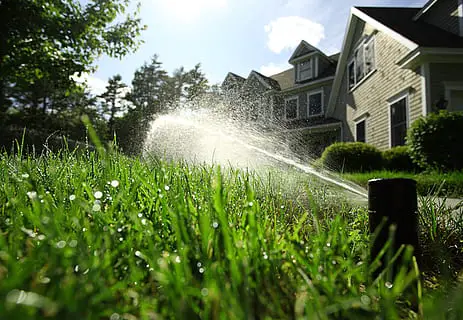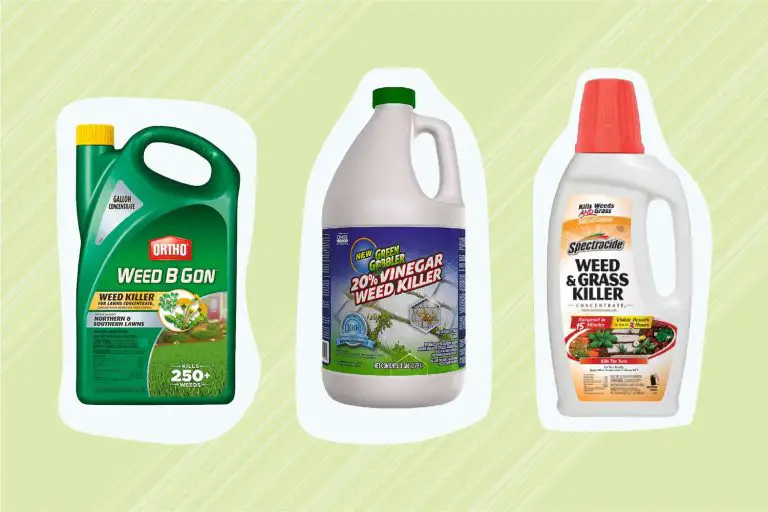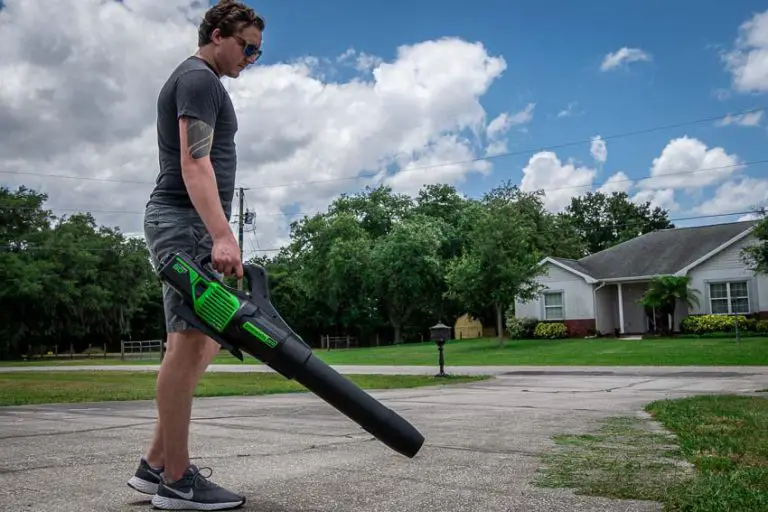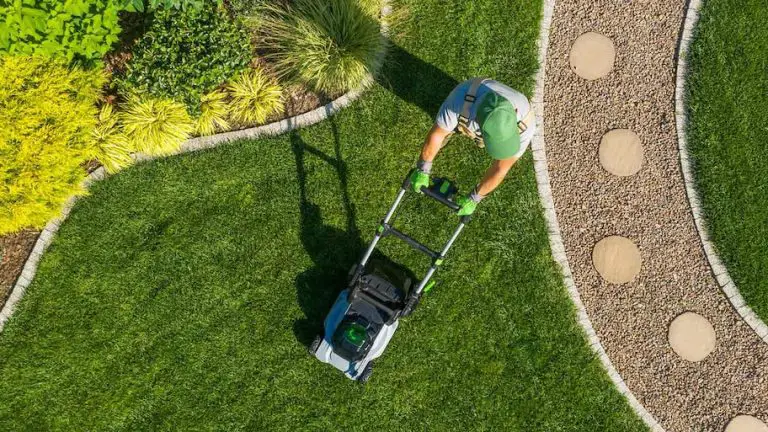To determine how long to leave your sprinkler on, consider factors such as soil type, grass type, weather conditions, and water pressure. Adjust the watering schedule accordingly to ensure proper hydration for your lawn.
Factors That Determine Sprinkler Duration
When it comes to watering your garden, it’s essential to know how long to leave the sprinkler on. The duration of sprinkler watering depends on several factors that affect the water needs of your plants. Understanding these factors will help you determine the right amount of water your garden requires.
Here are the key factors that influence sprinkler duration:
Weather Conditions
- Hot and dry weather: During hot and dry weather, plants lose moisture quickly, making it necessary to water them for longer durations. Consider the following:
- High temperatures and low humidity increase evaporation.
- Windy conditions can also cause water to evaporate rapidly from the soil surface.
- Extended dry spells may result in drought conditions, requiring additional watering.
- Cooler and moist weather: In contrast, cooler and moist weather conditions reduce plant water loss and evaporation rates. Keep in mind:
- Lower temperatures decrease evaporation, allowing for shorter watering durations.
- Higher humidity levels help retain moisture in the soil, resulting in reduced watering needs.
- Rainfall can supplement or replace the need for artificial watering.
Soil Type And Moisture Level
- Soil type: Different soil types have varying water-holding capacities. Take into account:
- Sandy soils drain quickly and may require more frequent watering.
- Clay soils retain water longer and require less frequent watering. However, overwatering clay soils can lead to waterlogging and root rot.
- Loam soils strike a balance, providing good drainage while retaining adequate moisture.
- Soil moisture level: Monitor the moisture level to determine appropriate sprinkler duration:
- Test the soil by inserting a finger into the ground to feel how damp it is.
- Use a soil moisture meter to get an accurate reading.
- Adjust sprinkler duration based on whether the soil is already moist or dry.
Plant Type And Water Requirements
- Plant water requirements: Different plants have varying water needs. Consider the following:
- Native plants and drought-tolerant varieties generally require less watering.
- Vegetables and fruits often have higher water requirements compared to ornamental plants.
- Young plants and newly seeded areas may require more frequent watering until they establish a robust root system.
- Mature plants may need less water, but prolonged periods of drought can still harm them.
- Evapotranspiration: Evapotranspiration represents the total amount of water lost from the soil through evaporation and plants through transpiration. Keep in mind:
- Evapotranspiration rates change with seasonal variations and may influence the duration of sprinkler watering.
It is crucial to consider all these factors when determining the sprinkler duration for your garden. By understanding the water needs specific to your plants, soil, and weather conditions, you can ensure optimal watering and promote a healthy and thriving garden.
Sprinkler Duration For Lawns
When it comes to maintaining a healthy lawn, one of the most important factors to consider is how long to leave your sprinkler on. By providing your lawn with the right amount of water, you can ensure its vibrancy and overall health.
Determining the lawn’s water needs and calculating the correct sprinkler run time play a crucial role in achieving this. Let’s dive into the key points you need to know.
Determining The Lawn’S Water Needs
To determine how long you should leave your sprinkler on for your lawn, you need to consider various factors. Here are the key points to keep in mind:
- Grass type: Different grass species have varying water requirements. Research the specific needs of the grass in your lawn to determine its ideal watering duration.
- Weather conditions: The weather plays a significant role in determining your lawn’s water needs. Take into account factors such as temperature, humidity, and precipitation when setting your sprinkler run time.
- Soil type and quality: The composition of your soil affects its ability to retain moisture. Sandy soils drain water more quickly, requiring shorter watering durations, while clay soils retain water longer, requiring longer watering durations.
- Lawn age: Newly seeded or sodded lawns require more frequent watering than established ones. Take the age of your lawn into consideration when determining the duration of your sprinkler run time.
Calculating The Correct Sprinkler Run Time
Now that you have a general understanding of your lawn’s water needs, it’s time to calculate the correct sprinkler run time. Consider the following points:
- Watering depth: Determine the desired depth of water penetration for your lawn, which typically ranges from 6 to 8 inches. This information can be found by contacting your local extension office or referring to reputable lawn care resources.
- Time needed for penetration: Measure how long it takes for your sprinkler system to deliver an inch of water. This can be done by placing shallow containers in your yard and tracking the time it takes to reach the desired water coverage.
- Duration calculation: Once you have the above information, multiply the watering depth by the time needed for penetration. For example, if your desired watering depth is 6 inches and it takes 30 minutes to deliver an inch of water, you should leave your sprinkler on for 180 minutes (6 inches x 30 minutes).
By considering these factors and performing these calculations, you can determine the appropriate length of time to leave your sprinkler on for your lawn. Remember that it’s important to monitor and adjust your watering schedule based on your lawn’s changing needs throughout the season.
Sprinkler Duration For Flower Beds
Assessing the water requirements of flowers:
- Different types of flowers have varying water needs. Assessing the specific water requirements of your flower beds is crucial to ensure optimal growth and health. Consider factors such as the types of flowers planted, soil type, climate, and stage of growth.
- Check the moisture levels in your flower beds regularly to determine if watering is necessary. Stick your finger about an inch into the soil near the roots of the plants. If it feels dry, it’s time to give your flowers a drink.
- The ideal moisture level for flower beds is typically around 6 inches deep in the soil. However, this may vary depending on the flower types. Study the specific needs of your flowers to provide the appropriate hydration.
Adjusting sprinkler duration based on sunlight exposure:
- Flowers require different amounts of sunlight to thrive. Understanding the sunlight exposure your flower beds receive can help you adjust the duration of sprinkler operation effectively.
- Flowers that prefer full sun may require more frequent and longer watering sessions. These flowers typically have higher water needs due to increased evaporation caused by the direct sunlight.
- If your flower beds are in partial shade, the sprinkler duration can be adjusted accordingly. These flowers may require less frequent and shorter watering sessions as they receive less direct sunlight and experience slower evaporation rates.
- It’s essential to monitor the moisture levels regularly by checking the soil’s consistency. Adjust the sprinkler duration based on the specific needs of your flowers and the amount of sunlight they receive.
- Remember that overwatering can be just as detrimental to flowers as underwatering. Aim for a balance to prevent waterlogged soil and ensure optimal growth.
With a thorough understanding of your flower beds’ water requirements and the amount of sunlight they receive, you can adjust the sprinkler duration accordingly. By providing the right amount of water and sunlight, your flowers will flourish and bring vibrant colors to your garden.
Sprinkler Duration For Vegetable Gardens
Vegetable gardens require proper irrigation to ensure healthy plant growth and bountiful harvests. Understanding the water needs of vegetables and customizing the sprinkler run time based on plant stage can greatly contribute to the overall success of your garden.
Understanding The Water Needs Of Vegetables
Vegetable plants have different water requirements depending on various factors such as their stage of growth, weather conditions, and soil type. Here’s what you need to know about the water needs of vegetables:
- Seedling stage: During the initial stage, when seedlings are just getting established, they require consistent moisture to promote root development. Keep the soil evenly moist, but not waterlogged, by watering gently for short intervals several times a day.
- Vegetative stage: As the plants grow and start developing leaves, their water needs increase. Water deeply to encourage strong root growth and allow the top inch of soil to dry before watering again. Aim for around 1 inch (2.5 cm) of water per week, adjusting as needed based on weather conditions.
- Fruiting stage: Once the plants start producing fruits, they require even more water. Provide ample moisture to support fruit development and prevent blossom-end rot or other moisture-related issues. Continue to water deeply and consistently, ensuring the soil receives sufficient moisture.
- Harvest stage: While the water requirements may slightly decrease during the harvest stage, it is still important to keep the plants adequately hydrated. Monitor the soil moisture and adjust the watering schedule accordingly to prevent any stress on the vegetable plants.
Customizing Sprinkler Run Time Based On Plant Stage
To optimize the sprinkler run time for your vegetable garden, it’s crucial to consider the specific stage of each plant. Here are some guidelines to help you customize the sprinkler duration:
- Seedling stage: Water lightly and frequently to provide consistent moisture without causing waterlogging.
- Vegetative stage: Increase the duration of watering sessions to ensure deep penetration of water, promoting strong root development.
- Fruiting stage: Extend the watering duration to accommodate the increased water demand of the plants during fruit production.
- Harvest stage: While slightly reducing the frequency, continue to provide sufficient moisture to keep the plants hydrated throughout the harvest period.
By understanding the water needs of your vegetable plants and adapting the sprinkler run time accordingly, you can provide optimal conditions for growth and maximize your garden’s productivity. Remember to consider other environmental factors such as weather conditions and adjust the watering schedule as needed.
Monitoring And Adjusting Sprinkler Duration
Properly monitoring and adjusting the duration of your sprinkler system is crucial to maintaining a healthy and thriving landscape. By following a few simple steps, you can ensure that your plants receive the appropriate amount of water without wasting this valuable resource.
Using A Rain Gauge Or Moisture Meter
- Place a rain gauge or moisture meter near your sprinkler system to accurately measure the amount of water your lawn and plants are receiving.
- Check the rain gauge after each watering session to determine if your plants are receiving adequate moisture.
- Use the moisture meter to gauge the soil’s moisture levels. This will prevent overwatering or underwatering your plants.
Making Adjustments Based On Plant Health And Soil Moisture
- Regularly monitor the health of your plants to detect signs of over or under-watering, such as wilting or yellowing leaves.
- Adjust the sprinkler duration based on the specific needs of your plants. Some plants, like succulents, require less water, while others, such as lawns, need more.
- Consider the soil type in your garden when determining the sprinkler duration. Sandy soil drains quicker than clay soil, so plants in sandy soil may require more frequent watering.
By monitoring your sprinkler duration and making necessary adjustments based on the needs of your plants and the moisture levels in the soil, you can ensure that your landscape remains healthy and vibrant while conserving water resources. Remember, a well-maintained sprinkler system is key to a flourishing garden.
Efficient Watering Techniques
One of the key ways to conserve water when using sprinklers is to implement efficient watering techniques. By following these tips, you can ensure that your lawn and plants receive adequate moisture while minimizing water waste:
- Watering during the early morning or late evening: This helps to reduce water evaporation as temperatures are cooler during these times.
- Adjusting sprinkler heads: Make sure your sprinkler heads are properly adjusted to avoid overspray on sidewalks, driveways, and other non-landscaped areas.
- Using a rain sensor: Install a rain sensor that automatically shuts off your sprinkler system when it detects rainfall, preventing unnecessary watering.
- Utilizing a drip irrigation system: Consider using drip irrigation for your plants and shrubs, as it delivers water directly to the root zone, minimizing evaporation and runoff.
Implementing Smart Irrigation Technology
Another effective way to conserve water is by implementing smart irrigation technology. Here are some key points to consider:
- Smart irrigation controllers: These controllers use weather data and information about your specific landscape to automatically adjust watering schedules, ensuring your plants receive the right amount of water at the right time.
- Soil moisture sensors: Install soil moisture sensors that measure the moisture level in the soil. This allows the irrigation system to only water when the soil is dry, preventing overwatering.
- Weather-based irrigation scheduling: Take advantage of weather-based irrigation scheduling, which adjusts watering times and frequencies based on real-time weather conditions, such as rainfall and temperature.
Xeriscaping And Drought-Tolerant Landscaping
Xeriscaping and drought-tolerant landscaping are effective strategies for conserving water in areas prone to drought or water scarcity. Consider the following tips:
- Choosing native and drought-tolerant plants: Select plants that are well-suited to your region’s climate and require less water to thrive.
- Mulching: Apply a layer of organic mulch around your plants to help retain moisture in the soil and reduce evaporation.
- Using permeable materials: Opt for permeable materials, such as gravel or permeable pavers, in hardscape areas to allow water to seep into the ground instead of running off.
- Limiting turf areas: Reduce the amount of turf grass in your landscape and replace it with low-water-use alternatives, such as gravel, native grasses, or drought-tolerant ground covers.
By implementing these efficient watering techniques, smart irrigation technology, and xeriscaping principles, you can conserve water while maintaining a healthy and beautiful landscape. Remember, every drop counts when it comes to water conservation.
Conclusion
To ensure a healthy and thriving lawn, it’s essential to understand how long to leave the sprinkler on. Finding the right balance is crucial, as under-watering can lead to drought stress, while overwatering can suffocate root systems and promote weed growth.
The duration depends on various factors, including the type of soil, weather conditions, and the specific watering needs of your plants. It’s recommended to follow the “inch per hour” rule, where you aim to water your lawn with an inch of water per week.
Break this down into two to three watering sessions, ensuring that each session lasts long enough to deliver the required amount. Additionally, consider investing in smart irrigation systems that adjust watering times based on weather conditions and soil moisture levels.
By adopting these practices, you can achieve a vibrant, lush lawn while conserving water resources and maintaining a sustainable approach to landscaping.






